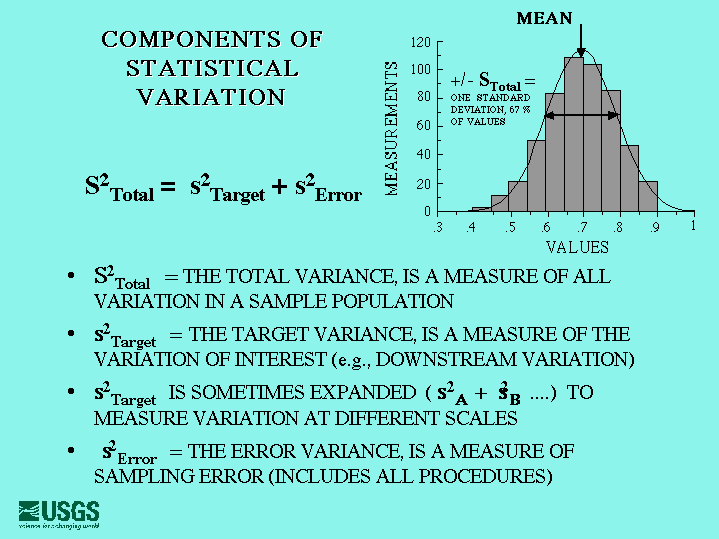
|

|
Slide 9 of 17
Notes:
The statistical basis for sampling is the measurement and partition of variation:
1-The range in values for any characteristic, shown by the bell curve, can be expressed as the standard deviation about the mean. The square of the standard deviation is the variance, and variance has the important property that it can be subdivided into additive components.
2-The total variance measures all of the variation in a sampled population.
3-Total variance can be subdivided into target variance and error variance, shown by the equation.
4-Target variance measures the real variation, of interest in most studies. Commonly, it can be further subdivided. Target variance is good variance (hereafter, coded green).
5-Error variance measures sampling error, measurement or analytical error, and any other source of unwanted variation in the data. Error variance is commonly regarded as a problem (hereafter, coded red).
This page is <URL: https://pubsdata.usgs.gov/pubs/of/1998/ofr-98-0332/sld009.htm>
Site Maintainers: Randy
Schumann and Gene
Ellis
For more information about this report contact: David A. Lindsey
Last updated 07 Dec 2016